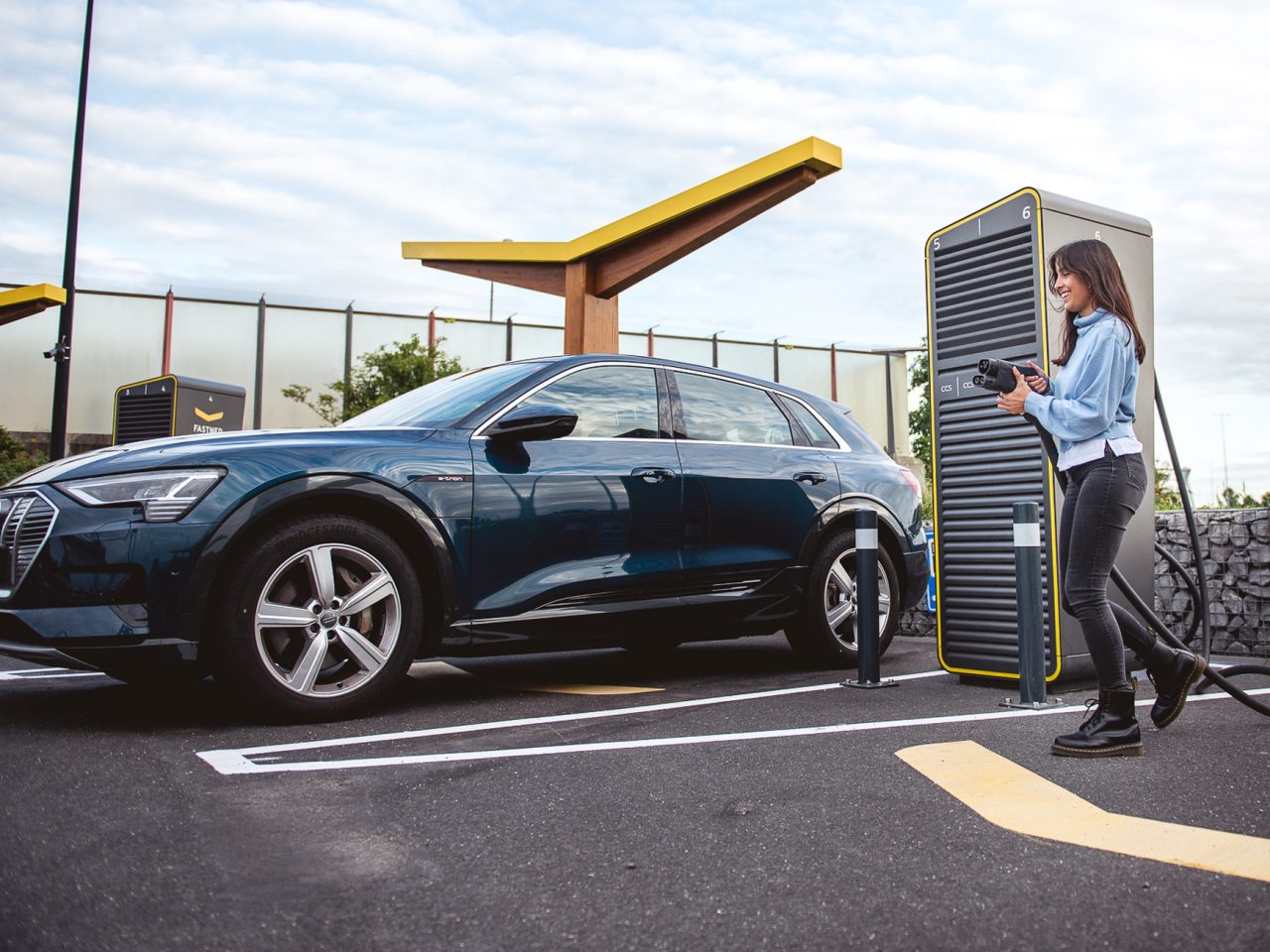The future of electric cars in the Netherlands
The Netherlands is among the leaders in Europe in the transition to electric mobility. According to figures from the Rijksdienst voor Ondernemend Nederland (RVO), there are now more than 539,000 electrified cars on Dutch roads. The vast majority of these, over 340,000, are 100% electric (BEV). The rest are plug-in hybrids (PHEV).
The number is growing steadily: 73,305 new, 100% electric models were registered in 2022. That is 23.5% of the total number of new cars sold in the Netherlands. By comparison, some 64,000 new BEVs were sold in 2021.
Several factors are driving the growth of electric cars in the Netherlands. An important factor is the increasing availability of charging stations. According to the RVO, more than 119,000 (semi)public charging points (AC) are available in the Netherlands and more than 4,300 rapid chargers (DC). To give you an example of how we perform compared to the rest in Europe: according to the ACEA, more than 29% of all charging points in the European Union are in the Netherlands.
Electric car tax breaks
In addition, the government encourages the purchase of electric cars with tax incentives. For example, BEVs are exempt from BPM (Tax on Passenger Cars and Motor Vehicles) until the end of 2025. This can easily save thousands of euros on the list price. The lower new-for-old value without BPM also translates into a lower insurance premium. It doesn’t stop there, because for a 100% electric car, you also pay no road tax (MRB). This will last until the end of 2024, after which this exemption will be phased out.
Individuals can also apply for subsidies (SEPP) for the purchase of a new or used electric car, provided the car meets certain conditions and if enough budget is still available. The amount of the grant is determined annually by the Cabinet.
Furthermore, lease drivers with a company electric car pay less additional taxes. For BEV, you pay 16% additional tax on the first 30,000 euros of the list value. For the remaining amount, you pay 22% additional tax. In comparison, for any other car with an internal combustion engine, you pay 22% additional tax on the entire list value.
Business owners wishing to purchase a 100% electric commercial vehicle can also apply for a subsidy (SEBA). In addition, an electric company car is eligible for an environmental investment deduction of 36% on the full investment amount minus 11,000 euros.

Future developments electric car
Despite the various tax breaks being phased out in the coming years, the growth of electric cars in the Netherlands is expected to accelerate in the coming years. There are several developments that will drive this growth.
Perhaps the most important development is the increasing availability of affordable electric cars. Currently, electric cars are often still more expensive to purchase than comparable gasoline and diesel cars and unaffordable to the masses. Continuous development of the technology and the entire production and supply chain reduces costs, which will eventually allow electric cars to be offered for the same money as comparable gasoline and diesel cars, or perhaps for less. Several brands have already announced new BEVs that will be offered for prices under €30,000.
Other important development is about the range and charging speed of electric cars. Thanks to the continuous development of battery technology and the huge investments involved, electric cars are getting farther and farther on a single battery charge. With this, electric cars are becoming increasingly practical and suitable for a growing group of motorists. It also lowers the threshold for people who may not drive that much but suffer from “range anxiety,” or the fear of being stranded by the side of the road with a dead battery.
Because batteries can be recharged at higher and higher powers at fast-charging stations, electric cars are also increasingly usable for long distances, without having to stop frequently and without lengthy charging times. We will also see more and more solar panels on electric vehicles in the future, especially on electric vans, city buses and trucks, to increase the range by dozens of miles on a sunny day.
READ ALSO: Electric car charging: everything you need to know
Future infrastructure development
Furthermore, it is crucial that the charging infrastructure continues to evolve. In the National Charging Infrastructure Agenda (NAL) states a goal of 1.7 million charging points to be available by 2030. However, far-reaching investments will have to be made to achieve this goal. The electricity grid in the Netherlands is in danger of being overloaded. This puts the transition to electric driving at risk of delay. According to researchers from TNO and PBL, there is a chance that the charging infrastructure and the capacity of the electricity grid will not be able to grow fast enough with the increasing numbers of electric vehicles.
Also in interesting development is about the integration of electric cars into the power grid. Using so-called bi-directional charging points, an electric car’s battery can not only be charged, but power can also be delivered back from the battery. In this way, electric cars act as energy storage and can help stabilize the electricity grid. This is important since solar and wind power generation are irregular. By cleverly using electric cars as energy buffers, they can play an important role in the energy transition.
We also see a strong trend in the integration of electric cars into the energy system of homes, especially those with solar panels and private driveways. By making an electric car work optimally with a bi-directional charger, a home battery and solar panels, the self-generated solar energy can be optimally utilized for domestic use and to drive electrically. This will make you (mostly) self-sufficient and further reduce your electric car charging costs. In addition, the net-metering scheme for solar panels is being phased out. So it produces less and less if you feed your self-generated solar energy into the grid.

Electric car benefits
The future of motoring is electric. There’s no question about that. That choice has already been made by the industry. Starting in 2035, the sale of new cars with traditional gasoline or diesel engines will be banned in the European Union. That choice was made because electric cars offer all sorts of advantages over traditional gasoline and diesel cars.
First, no exhaust fumes are released while driving because a BEV does not consume fuel. Electric cars therefore play a role in reducing CO2 emissions, improving air quality and reducing dependence on fossil fuels. Incidentally, it is important to increase the proportion of green electricity in the energy mix, because an electric car that runs on electricity from coal, gas and biomass power plants is far from being “emission-free.
Furthermore, an electric car requires less maintenance, in general, electricity is cheaper than fuel, and an electric car is comfortable, quiet and powerful thanks to the whisper-quiet electric motor that is naturally responsive and provides plenty of pulling power. Moreover, an electric motor has a significantly higher efficiency (95%) than an internal combustion engine. That means almost all the energy that goes into it is converted into motion to make the wheels turn. In an internal combustion engine, about a third of the energy is lost in heat alone.
Finally, you can easily recover energy with an electric motor. Every time the power pedal is released, the electric motor immediately acts as a generator and the battery is recharged a little with free power. But not everything is hosanna. An electric car also has drawbacks. With some drawbacks it is a matter of time before they are resolved with other drawbacks it is much more complicated and complex.
Making electric driving affordable
While the growth of electric cars in the Netherlands is promising, there are also challenges to overcome. The biggest challenges lie in making electric cars affordable that are also practical for the general public with regard to range, charging times and towing weight.
It is also important that energy prices fall. High energy costs discourage motorists from switching to electric cars. In general, charging costs should not exceed €0.70 per kWh. Then electric driving is more expensive than gasoline driving and the higher purchase price of an electric car is not offset.
Another challenge lies in expanding the capacity of our power grid. Without major investment, the construction of thousands of new charging stations will be delayed. If the charging infrastructure does not grow fast enough with the number of electric cars, the transition to electric mobility could stall or be severely delayed.
By the way, other countries in Europe face a much greater challenge. About half of all charging points in the European Union are located in two countries: The Netherlands (29.4%) and Germany (19.4%). This means that elsewhere in the European Union a huge amount of catching up is needed to get the charging infrastructure in place.

Challenges to energy production
It is also important to reduce emissions throughout the battery and car production chain. Electric cars have a larger carbon footprint during production compared to traditional gasoline and diesel cars. This is then compensated while driving because an electric car then emits nothing at all. But since we have stopped importing gas from Russia due to the war in Ukraine, coal-fired power plants are again running at full power to relieve the gas-fired power plants. So with the current gray power mix, electric cars have to drive more miles before the tipping point is reached. Coal plants emit twice as much CO2 as gas plants.
Let us assume that increased energy production from coal-fired power plants is temporary. The Netherlands Environmental Assessment Agency assumes that by 2030 about 85% of Dutch electricity consumption will come from renewable sources. In 2022, it was 41%.
READ ALSO: How much weight can an electric car tow?

